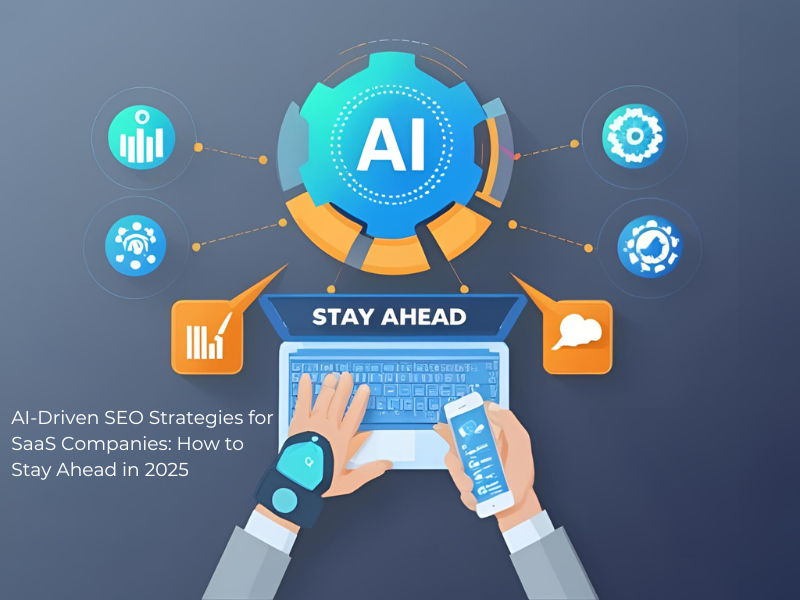Article’s Content
The Evolution of Data Visualization in Search Marketing
The evolution of data visualization in search marketing has been nothing short of revolutionary. Over the past decade, we’ve significantly shifted from static bar charts and pie graphs to dynamic, interactive dashboards that provide real-time insights. Early adopters of data visualization were often limited by the technology of the time, which struggled to process and display large datasets efficiently. However, advancements in computing power and software capabilities have opened up new possibilities, allowing marketers to visualize complex datasets with unprecedented clarity and detail.
One of the most significant changes in this evolution has been the integration of artificial intelligence (AI) and machine learning (ML) into data visualization tools. These technologies enable automated data analysis, uncovering patterns and trends that would be impossible to detect manually. For instance, AI-driven tools can analyze user behavior and search trends to predict future movements, offering marketers a proactive approach rather than a reactive one. This shift from descriptive to predictive analytics marks a pivotal moment in the history of data visualization in search marketing.
Moreover, the rise of cloud computing has democratized access to powerful data visualization tools. Small and medium-sized businesses, which previously could not afford expensive software and hardware, can now leverage cloud-based solutions to gain insights from their data. This democratization has leveled the playing field, allowing more businesses to compete effectively in the digital marketplace. As we move toward 2025, this trend is expected to continue, with even more sophisticated tools becoming accessible to a broader range of users.
Key Trends Shaping Data Visualization for 2025
As we look ahead to 2025, several key trends are poised to shape the future of data visualization in search marketing. One of the most notable is the increased focus on real-time data visualization. In an era where consumer behavior can change in the blink of an eye, accessing and interpreting data in real time is invaluable. This trend is driven by advancements in streaming data technologies, which allow for the continuous flow of information, and the development of more responsive visualization tools that can update data representations instantaneously.
Another trend to watch is the growing importance of storytelling in data visualization. Presenting data is insufficient; marketers must also convey a compelling narrative that drives action. This involves using design principles and interactive elements to guide the viewer through the data, highlighting key insights and providing context. Compelling data storytelling helps bridge the gap between data analysts and decision-makers, ensuring that insights are understood and acted upon.
Additionally, integrating augmented reality (AR) and virtual reality (VR) into data visualization is set to revolutionize how we interact with data. AR and VR technologies offer immersive experiences that can make complex data more accessible and engaging. For example, a marketer could use AR to project a 3D model of customer journey data onto a conference room table, allowing team members to explore the data from different angles and perspectives. This level of immersion can lead to deeper insights and more informed decision-making.
Importance of Data Visualization in Search Marketing Strategy
Data visualization is crucial in search marketing strategy, transforming raw data into actionable insights. Visualizing data helps marketers quickly identify trends, patterns, and anomalies that might otherwise go unnoticed in traditional reports. This is particularly important in search marketing, where the landscape is constantly changing and the ability to adapt quickly can make or break a campaign.
One of the primary benefits of data visualization is its ability to simplify complex data. Search marketing often involves analyzing vast amounts of data from various sources, including search engines, social media, and website analytics. Visualizations can distill this information into clear, concise visuals that are easier to understand and interpret. This enables marketers to make data-driven decisions more efficiently, optimizing their strategies for better results.
Furthermore, data visualization fosters better communication and collaboration within marketing teams. When data is presented visually, it becomes more accessible to team members who may not have a background in data analysis. This democratization of data ensures that everyone, from junior marketers to senior executives, can contribute to the decision-making process. Visualization tools help teams align their efforts and work towards common goals by facilitating a shared understanding of the data.
Tools and Technologies for Effective Data Visualization
The landscape of data visualization tools and technologies is rapidly evolving, offering search marketers various options. One of the most popular tools today is Tableau, which is known for its robust capabilities in creating interactive and shareable dashboards. Tableau’s user-friendly interface allows marketers to connect to various data sources, create custom visualizations, and derive insights without extensive technical knowledge. Its integration with other marketing platforms makes it a versatile tool for consolidating and analyzing data from multiple channels.
Another powerful tool is Google Data Studio, which offers a free, cloud-based solution for creating dynamic dashboards and reports. Google’s suite of marketing tools, including Google Analytics and Google Ads, seamlessly integrates with Data Studio, providing marketers with a comprehensive view of their performance metrics. The ability to share interactive reports with stakeholders in real-time enhances transparency and helps make informed decisions quickly.
Power BI, developed by Microsoft, is another significant player in the data visualization space. Power BI stands out for its advanced analytics capabilities, including using AI to identify trends and anomalies. Its compatibility with various data sources and its ability to handle large datasets make it an excellent choice for enterprises that need deep insights into their search marketing data. Power BI’s collaboration features also enable teams to work together on data analysis and visualization projects, fostering a data-driven culture within organizations.
Case Studies: Successful Data Visualization in Search Marketing
Several companies have successfully leveraged data visualization to enhance their search marketing efforts, demonstrating the transformative power of this technology. One notable example is Airbnb, which uses data visualization to optimize its search engine marketing (SEM) campaigns. By analyzing search trends and user behavior data through interactive dashboards, Airbnb can identify the most effective keywords and ad placements, resulting in higher engagement and conversion rates. This data-driven approach has enabled Airbnb to stay ahead of competitors and continually improve its marketing strategies.
Another compelling case study is that of HubSpot, a leading inbound marketing and sales platform. HubSpot utilizes data visualization to track the performance of its content marketing and SEO efforts. By visualizing key metrics such as organic traffic, keyword rankings, and conversion rates, HubSpot can quickly identify which content pieces are driving the most value. This insight allows them to refine their content strategy, focusing on high-performing topics and optimizing underperforming areas. The result is a more efficient and effective search marketing strategy that delivers measurable results.
A third example is Coca-Cola, which employs data visualization to manage its global digital marketing campaigns. With vast data generated from various markets and regions, Coca-Cola uses advanced visualization tools to consolidate this information into a unified view. This enables their marketing teams to monitor campaign performance, identify regional trends, and allocate resources more effectively. By leveraging data visualization, Coca-Cola can make data-driven decisions that enhance its global marketing efforts and drive brand growth.
Challenges in Implementing Data Visualization Techniques
Despite the numerous benefits of data visualization, implementing these techniques in search marketing is challenging. One of the primary obstacles is data quality. Inaccurate or incomplete data can lead to misleading visualizations, which in turn can result in poor decision-making. Data accuracy requires robust data governance practices, including regular data cleaning and validation. Marketers must also be vigilant about their data sources, ensuring that they are reliable and up-to-date.
Another challenge is the complexity of data integration. Search marketing data often comes from multiple sources, such as search engines, social media platforms, and web analytics tools. Integrating these disparate data sources into a single visualization can be daunting, requiring significant technical expertise and resources. Marketers must invest in tools and technologies that facilitate seamless data integration and train their teams to handle these complex processes.
Additionally, the challenge is creating visualizations that are informative and engaging. While it is essential to present data in a way that is easy to understand, it is equally necessary to ensure that the visualizations capture the viewer’s attention and convey a compelling narrative. This requires a deep understanding of design principles and user experience, and the ability to balance aesthetics with functionality. Marketers must continually refine their visualization techniques to meet their audience’s evolving needs and preferences.
Best Practices for Creating Impactful Visualizations
Creating impactful data visualizations requires a strategic approach and adherence to best practices. One of the most important principles is to keep it simple. Overloading a visualization with too much information can overwhelm the viewer and obscure key insights. Instead, please focus on the most critical data points and highlight them with clear, concise visuals. Simplifying the design not only makes the visualization more accessible but also ensures that the message is communicated effectively. Another best practice is using the correct visualization type for the data. Different types of data Unlocking Insights: The Future of Search Marketing Data Visualization in
2025.
The AI revolution is reshaping how information is found and consumed — and with the right strategy, your business can lead the change rather than be left behind. Looking to enhance your SEO strategy? Contact our team today to get started!











